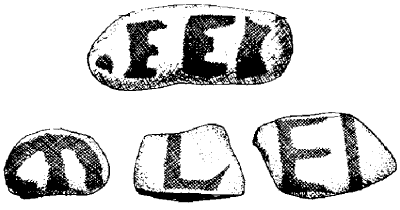 |
Science Frontiers ONLINE No. 33: May-Jun 1984 |
|
|
The Azilian Pebbles
Although Bahn's article is primarily about how to spot fake Azilian pebbles, he also provides some fascinating facts about the real ones. Genuine Azilian pebbles seem to have been carefully selected for size and shape. Most are oval or oblong and may be up to 8 centimeters long, 3 centimeters wide, and one centimeter thick. Over a thousand have been found around Europe. They have been considered primitive art, markers for prehistoric games, and possibly early forms of notation. Claude Couraude has analyzed the markings and concluded that particular combinations of signs recur frequently; the same for certain numbers of dots. There are 16 simple types of signs (dots and lines) but only 41 of the many possible combinations have been found. Evidence supports the existence of some sort of 'syntax.' Couraud speculates that some sort of cyclic notation is involved, perhaps lunar in nature, like some of the markings found on bones from the same general period.
(Bahn, Paul G.; "How to Spot a Fake Azilian Pebble," Nature, 308:229, 1984.)
Reference. Additional information on the Azilian pebbles may be found in our Handbook Ancient Man. To order, visit: here.
 | Typical Azialian pebbles (from Ancient Man) |